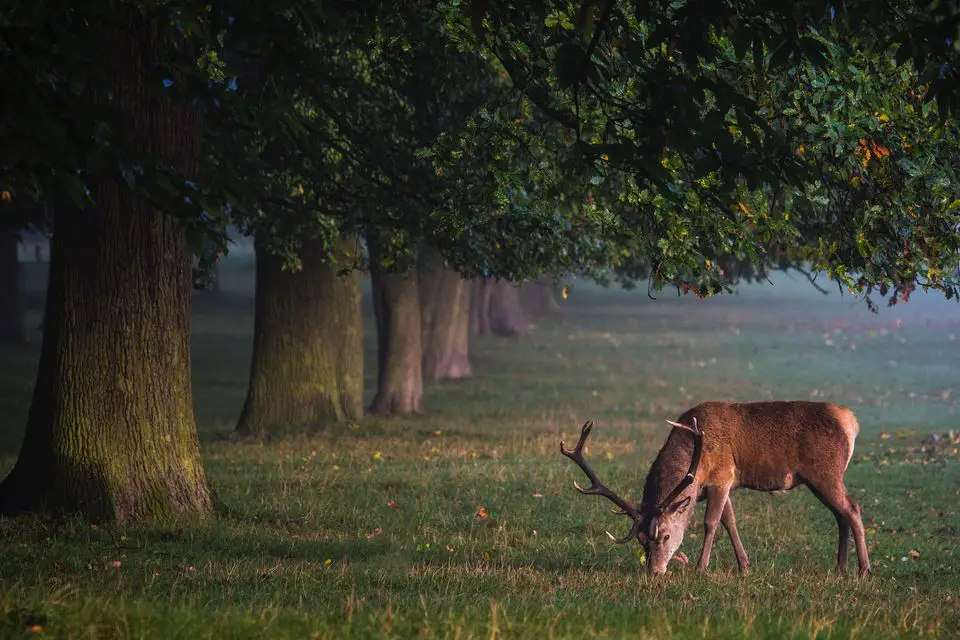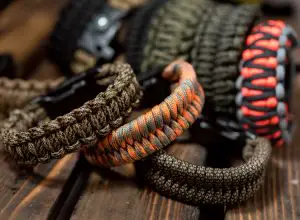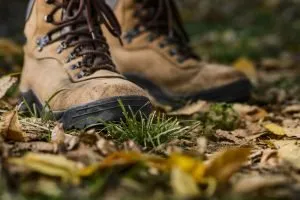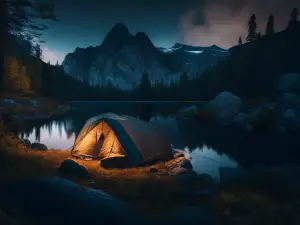What To Do If You See A Deer While Hiking

Deers are seemingly everywhere, and if you live in an area with a large deer population, chances are you’ll see one (or several) while out on a hike. While they may look all innocent and cute (thanks, Disney!), it’s important to remember that they are still wild animals and absolutely should be treated as one. So in this article, I’ll talk about what to do if you see a deer while hiking, as well as some general tips for how to hike safely in deer country.
Quick Links
All About Deers
So first off, let’s talk about what deers are. Deers are a type of mammal that belongs to the family Cervidae, which includes elk, reindeer, moose, and caribou. They are found all over the world in a variety of different habitats, from forests and meadows to mountains and even deserts. In North America, the most common type of deer is the white-tailed deer, which can be found in every single US state (except for Alaska) and all of Canada except for the Arctic tundra.
The population of deer has exploded in recent years due to a variety of factors, including loss of predators, early snowmelt, and an abundance of food. There are not over 25 million deer in the United States, and my hometown of Texas has about 5.5 million of them! As a matter of fact, I typically see Deer while going on my short neighborhood hikes.
It’s not all rosiness and rainbows for deer, however. According to the National Wildlife Federation, deer are one of the most common animals to be hit by cars, with around 1.5 million collisions each year. It’s also led to an increase in human-deer interactions, which can be problematic. They also play host to a variety of parasites and diseases, which can sometimes be passed on to humans.
Where Are Deer Typically Found?
The better question is, where are deer not found? As I said, deer are found all over the world in a variety of habitats. But if you’re looking to avoid them, there are a few places you can go.
If you live in North America, the best place to avoid deer is probably going to be Alaska. There are very few deer in Alaska, and the ones that are there are mostly found in the southeastern part of the state. But then, do you really want to avoid deer and run into grizzly bears or wolves?
The other place you’re unlikely to find deer is in the desert. Deer need access to water, so they avoid places like Death Valley and the Mojave Desert.
Some other places you might find deer are:
- In forests, especially in the early morning or evening when they’re more active
- Near ponds, lakes, or streams
- In meadows or fields
- Along roadsides (this is where a lot of car collisions happen!)
Are Deer Dangerous?
No, deer are generally not dangerous. But that doesn’t mean you should approach them or try to pet them because they are still wild animals and can be unpredictable. If a deer feels threatened, it could attack you in self-defense.
It’s also important to remember that deer carry a variety of parasites and diseases that can be passed on to humans. The most common one is Lyme disease, which is transmitted by deer ticks. Deer ticks are small, brown ticks that are often found in wooded areas. If you find one on your body, it’s important to remove it immediately and see a doctor.
Other diseases that deer can carry include:
- Chronic wasting disease
- Tuberculosis
- Epizootic hemorrhagic disease
Do Deer Attack Humans?
You may be surprised to know that deer can and have attacked humans. In fact, deer are the animals most likely to attack humans in North America (except bees, wasps, and hornets which kill more people each year).
Deer are often some of the most hunted animals in the world, and they naturally fear humans. But they could attack you in self-defense if they feel threatened or cornered.
And as I mentioned earlier, there’s been an increased human-deer interaction due to the explosion in the deer population. Another reason this is problematic is that when wild animals get used to humans, they lose their natural fear of us. And with an evergrowing population and people treating deer like home pets, it leads to a vicious cycle of deer becoming increasingly aggressive over time.
What Should You Do If You See a Deer While Hiking?
The best thing to do if you see a deer while hiking is to give it plenty of space and admire it from afar. If you get too close, the deer may feel threatened and could attack you. And this is a common safety tactic for all wildlife, not just deer.
Don’t try and feed it, don’t try and pet it, and definitely don’t try and take a selfie with it. Just enjoy the moment and appreciate the beauty of nature.
Deer are generally very docile animals and will just mindlessly frolic among themselves or their group. Even if a deer notices you from afar, chances are slim to none that they’ll want to approach you or even come close to you.
The only time you should be worried about a deer attacking you is if you startle one or get too close to their young. Other than that, they’re more likely to run away from you than anything else.
What Should You Do If A Deer Charges At You?
So what exactly SHOULD you do if a deer suddenly comes charging at you?
The first thing to know is that Deer antlers are sharp and can cause serious injuries. So the best thing to do is just try and get away from the deer as quickly as possible. Find a tree or something else to put between you and the deer if you can.
If a deer manages to hit you with its antlers, is aggressive, and doesn’t back down, you should try and fight back. Use whatever you have to defend yourself, whether a stick, a rock, or even your fists. Aim for the deer’s face or eyes, as this will be the most effective way to get it back off.
And finally, if all else fails, you can try and play dead. This may sound counterintuitive, but sometimes playing possum is the best way to get a deer to back off. Just lie down on the ground, curled up, and remain still until the deer loses interest and goes away. But please note that this doesn’t work for all animals, especially mountain lions.
Final Thoughts
Deer are beautiful creatures that should be admired from afar. Don’t let Bambi fool you; deer can be dangerous animals if they feel threatened. So it’s important to give them space and not to feed or approach them. Other than that, it’s generally the same precautions you would take with any other wild animal.
Have you ever had a close encounter with a deer? What did you do? Let me know in the comments below.






